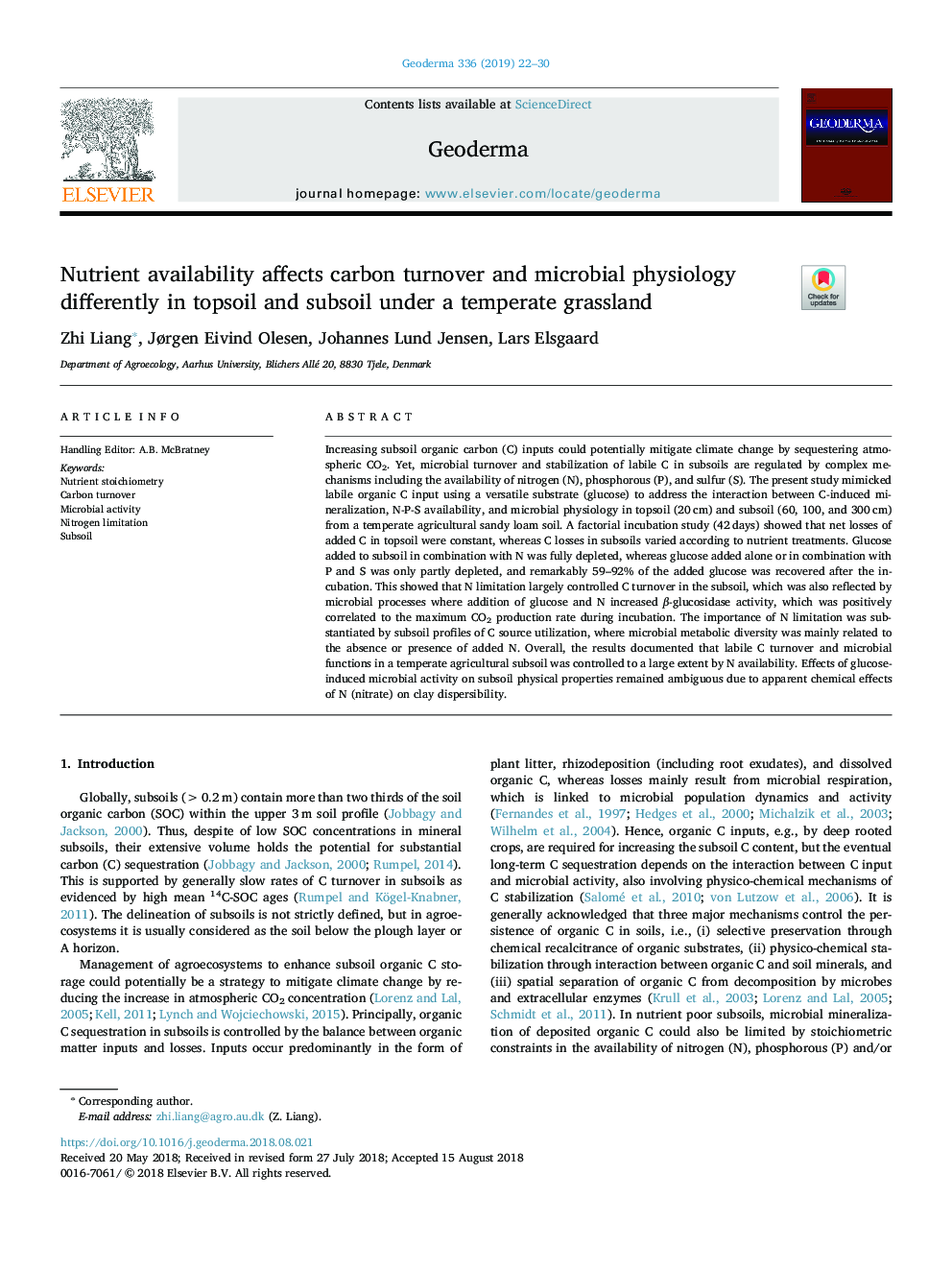| Article ID | Journal | Published Year | Pages | File Type |
|---|---|---|---|---|
| 10138814 | Geoderma | 2019 | 9 Pages |
Abstract
Increasing subsoil organic carbon (C) inputs could potentially mitigate climate change by sequestering atmospheric CO2. Yet, microbial turnover and stabilization of labile C in subsoils are regulated by complex mechanisms including the availability of nitrogen (N), phosphorous (P), and sulfur (S). The present study mimicked labile organic C input using a versatile substrate (glucose) to address the interaction between C-induced mineralization, N-P-S availability, and microbial physiology in topsoil (20â¯cm) and subsoil (60, 100, and 300â¯cm) from a temperate agricultural sandy loam soil. A factorial incubation study (42â¯days) showed that net losses of added C in topsoil were constant, whereas C losses in subsoils varied according to nutrient treatments. Glucose added to subsoil in combination with N was fully depleted, whereas glucose added alone or in combination with P and S was only partly depleted, and remarkably 59-92% of the added glucose was recovered after the incubation. This showed that N limitation largely controlled C turnover in the subsoil, which was also reflected by microbial processes where addition of glucose and N increased β-glucosidase activity, which was positively correlated to the maximum CO2 production rate during incubation. The importance of N limitation was substantiated by subsoil profiles of C source utilization, where microbial metabolic diversity was mainly related to the absence or presence of added N. Overall, the results documented that labile C turnover and microbial functions in a temperate agricultural subsoil was controlled to a large extent by N availability. Effects of glucose-induced microbial activity on subsoil physical properties remained ambiguous due to apparent chemical effects of N (nitrate) on clay dispersibility.
Related Topics
Physical Sciences and Engineering
Earth and Planetary Sciences
Earth-Surface Processes
Authors
Zhi Liang, Jørgen Eivind Olesen, Johannes Lund Jensen, Lars Elsgaard,
